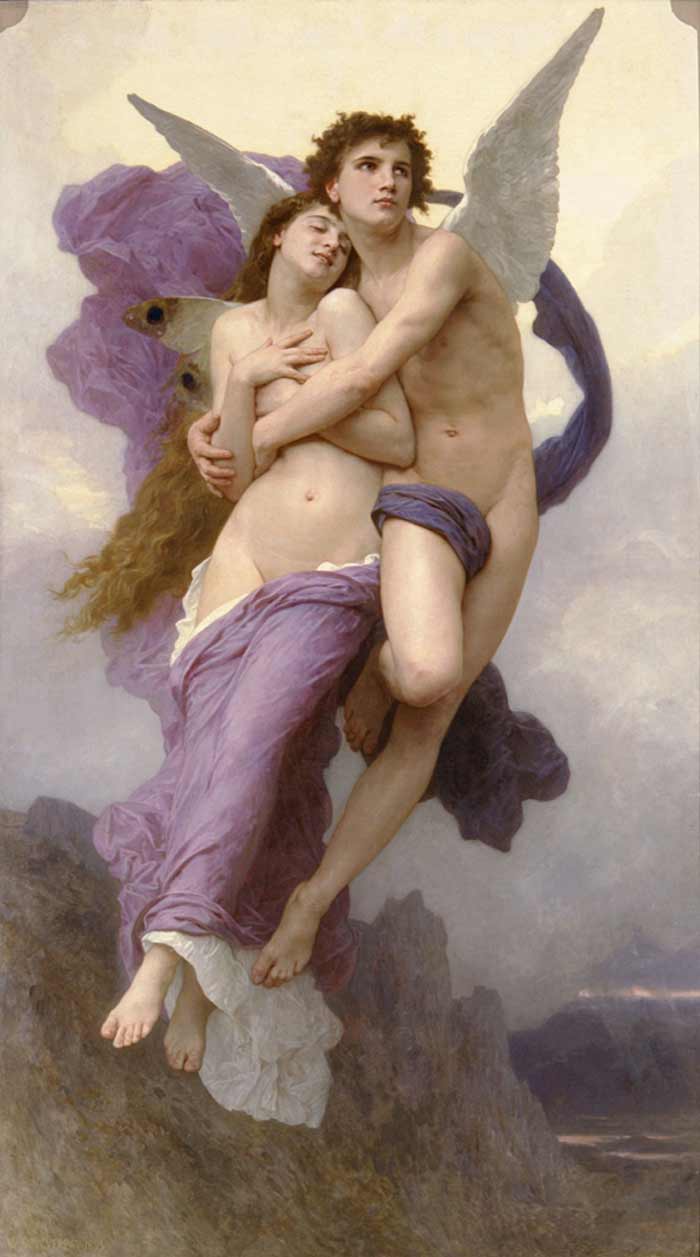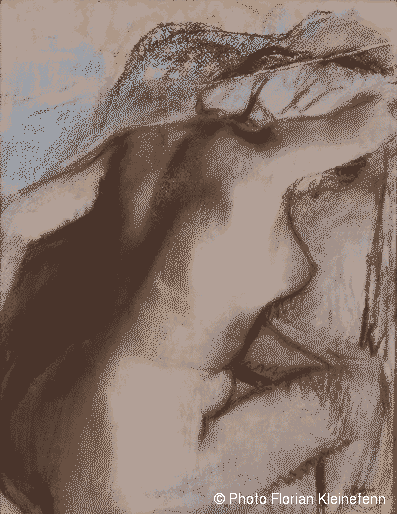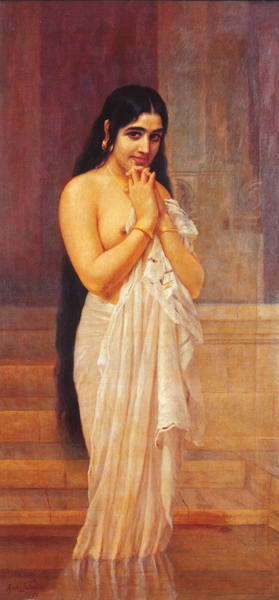Article by Juhi Kulkarni
 Since Paleolithic times, the female nude body represented The Great Mothers or the Venus as we know them. She was with a large head and voluptuous body and seldom had any limbs, her sexual organs were depicted unashamedly and were worshiped too. Women being the object of worship, the one who bears fruits of progeny, was not just a celebration of beauty but also a stratum of more concealed and profound meaning.
Since Paleolithic times, the female nude body represented The Great Mothers or the Venus as we know them. She was with a large head and voluptuous body and seldom had any limbs, her sexual organs were depicted unashamedly and were worshiped too. Women being the object of worship, the one who bears fruits of progeny, was not just a celebration of beauty but also a stratum of more concealed and profound meaning.
Many such examples have been found scattered all over the world right from the European to Chinese to Indian Empires. Amongst the visual genre filling the history of art, the female nude has been one of the most ardent and at the same time controversial subjects that have been tackled. Representing the very archetype of beauty, harmony and supernatural abilities since ancient times, the female body has been the object of erotic desire for the viewers. It is thus caught in the unique condition of showcasing both, the height of idealization and the depth of obscure and uncontrollable sensual drives.

Nobody who has ever seen the Venus of Urbino has not had a lasting impression on his mind. And nobody had painted naked women as controversially as Titian did during his times. His ravishing Venus is a lover playing her beauty bare, and the recipient of her optical voyeurism is anyone who happens view this painting in the Uffizi gallery in Florence, Italy.
Mark Twain once called Titian’s Venus “the foulest, the vilest, the obscenest picture the world possesses.” With her unabashed nudity and strong gaze into the viewers’ eyes, the nude female in this 1538 work of art is undeniably erotic.
Titian creates with his profound artistic skills the lavish presence of this nude: the rapture of her carnal glory. Her beauty is enhanced by the modern unabashed approach that she has been posed in- totally confident and in love with herself. For me, there’s nothing more moving in art and composition of the Venus of Urbino. “The argument for the painting’s didacticism was made by the late art historian Rona Goffen in 1997’s “Sex, Space, and Social History in Titian’s Venus of Urbino”.
Titian contrasts the straight lines of the architecture with the curves of the female form, and the screen behind Venus bisects the painting, a large-scale division that is mitigated by unifying elements such as the use of color and the floral patterns of the couch, cassoni, and background tapestries.”

Another one of my favorite female nudes is by Sandro Botticelli – Birth of Venus (1484).
Created during the onset of Renaissance, Botticelli”s Venus is a radiant beauty with a sense of calmness, fit for a goddess. Although in this work, he has not employed Renaissance perspectival innovations, the elegance of the classical subject matter was something that would have intrigued wealthy Florentines who patronized this type of work. Her curves and lines are a classic combination of realism with a hint of abstract rendering, true to Botticelli’s oeuvre. He paid a lot of attention to her hair and hairstyle, which reflected his interest in how the women of that time had long hair and hairstyles.
As everybody else’s his Venus has an idealized face which is free of blemishes, and beautifully shaded to distinguish from the lighter to a more shaded side. The depiction of nude women was not normally done in the Middle Ages, with a few exceptions in specific circumstances. In painting the Venus, Botticelli painted a dark line around the contours of her body. This made it easier to see her bodily forms against the background, and it also emphasized the color of her milky skin due to which Venus almost looks like her flesh is made out of marble, underscoring the sculpturesque nature of her body.
Obviously, for the modeling of this figure, Botticelli must have turned to an Aphrodite statue, such as the Aphrodite of Cnidos, in which the goddess attempts to cover herself in a gesture of modestly. The demand for this type of scene, of course, was humanism, which was alive and well in the court of Lorenzo d’Medici in the 1480s. Here, Renaissance humanism was open not only to the use of a pagan sculpture as a model, but also a pagan narrative for the subject matter.
“A woman prepares to make love to a God in this heavenly painting. Jupiter comes to Danae in the form of a shower of gold – a joke with an edge. The model may have been a courtesan and the lover of the cardinal who commissioned this painting, so money was changing hands in their love life. Yet there’s something overwhelmingly spiritual about this scene. Titian here raises sex into a religion”.

This large painting by Rembrandt has been subject of attack and restoration which is quite obvious by its encapsulating nature. Rembrandt was a master of his art in his own right and his works hold a high value till date encompassing the viewer into itself. The nude figure of Danae is beautifully lit by the light of gold, possibly she is either calling Zeus who impregnated her or she is becking after him to stay back. Her curves are well exposed and her body that of a pregnant woman is gently supported by the pillows she rests her arm on. The entire scene is very intricately handled, the beads on her hands, a sleeping bronze cupid on top of her bed, the folds of her bedding and the golden shoe, leads us to further imagination of what might happen or keep pondering over what has already happened in her bedroom.
One of the most intriguing aspects of this work, other than the lavish nude herself is the amount of limited palette that Rembrandt has used. he has come to be known for his play chiaroscuro achieved by use of limited colors and their intermingling, giving it another dimension tonally.

The Rokeby Venus, also known as the Toilet of Venus, by Diego Velázquez, was also attacked in the early 20th century by a suffragette who slashed it repeatedly. And yet, a second look at Velázquez’s subtle painting reveals that it contains its own critique of looking.
As we lay our eyes on pink flesh which is laid against the dark contrast of her grey bed cover we can’t help but notice the crescent shape of the figure laid out amid rich silvers and reds, the Venus is looking in a mirror, staring directly at the onlooker and yet her gaze is blurred, which leave us with some sort of sly dignity of staring at a woman in the private time.
“What is she thinking of? Velázquez makes us ask. He sets up an anxious tension between mind and body, between displayed flesh and secret soul. In so doing he paints a nude not only beautiful, but profound.” Velazquez also plays with the viewer in depiction of the cupid where he has shown him wearing fake wings thus passing subtle indications that neither the cupid is a real cupid and nor the Venus is a real Venus and could be very well just another woman waiting.

“This is one of Bouguereau’s more romantic pieces. With Psyche finally in the arms of her love, Cupid, the two ascend to heaven. The subtle use of color is truly astonishing. The light and dark purples of the cloth surrounding Cupid and Psyche play beautifully against the purple grey clouds and mountains.” The structure and angles of her bellowing cloth along with the curve of Cupid’s stole supports the off centered angles of their bodies and brings out a beautiful balance yet graceful force to their movement. His arms entwined over her semi clad body and her head resting on his shoulders in totally surrendered to her lover depict the epitomb of romance and ultimate submission. The myth of Cupid and Psyche dates all the way back to Apuleius in the 2nd century AD.
In the myth, Psyche is a beautiful princess of whom the goddess Venus is jealous. In her rage she orders her son cupid to make Psyche fall in love with a monster, but Cupid falls in love with her himself. After several trials Cupid and Psyche make their plea to the gods who turn Psyche into an immortal and allow them to be married in heaven (British Library). The story of Cupid and Psyche was a subject matter for several other of Bouguereau’s paintings including Cupid and Psyche as Children (1889), Psyche and Cupid (1896), and Psyche.”

At the first glance it looks like a shabby unfinished drawing but as we gaze further the glory of the detailed back emerges with a full blow. It has beautiful shades of brown shadow probably achieved by using burnt umber and burnt sienna in contrast to the lighter tones of the golden highlights of her transparent flesh.There seems to be a hurry for completion of the drawing as though the model was about to move and catch him red handed in between his act of slyly drawing her.
“Nude figures are central to the work of Edgar Degas (1834-1917), from his early works in the first half of the 1850s to the final years of his artistic activity on the eve of the First World War. Degas was noted for his innovative temperament, which expressed itself in many different areas. He no longer put forward an idealized nude, but rather a representation of the naked body, unheard of until then. The juxtaposition of countless strokes of pastel brings the flesh to life. Observed in the artificial light of the dressing room, the bodies fascinated champions of the Naturalist aesthetic.
Huysmans admired “the supreme beauty of flesh tinted blue or rose by the water, […] real, living, undressed flesh” whereas Geffroy praised the boldness of the bathers’ “frog-like postures”.Degas returned repeatedly to his favorite poses, always experimenting with new techniques. Anatomical accuracy became less important to him than expressing emotion and feeling that became ever more palpable in his work on the female body. He became more and more interested in representing his models from behind, as if focusing more on the morphology of the model than on her personality. In parallel with the discovery of chronophotography, which could capture all the stages of movement, Degas continued his research into transcribing the gestures of his women bathing.

In his “Kerala Girl After the Bath” we can observe an idealistic female half nude standing with her alluring eyes, and her nipple partly peaking out. The background is simplistic keeping the focus on the lady itself. Her clasped hands and slight smile makes us question her intentions as to what she really wants. Ravi Verma’s mastery is clearly seen not only in the face of the lady but also in the folds of her creamy white saree which is draped excellently on the contours of her anatomically scrupulous body. “While the bulk of Ravi Varma’s work consisted of portraits, his fame rested on his Pauranik (Mythological) paintings, which dramatized scenes from the Ramayana and Mahabharata in the European-inspired naturalism that was in vogue at the time in late 19th century.
In a public visual arena dominated by Victorian commercial and academic imagery, the very presence of Pauranik (mythological) subject matter was a powerful reminder of the glories and legends of a shared Indian heritage. Its role in visualizing a national past when the very contours of such a nation were indistinct, cannot be undermined.” He was the first man to give faces to the Indian Gods: Before him, there used to be sculptures and miniatures in the pad kathas as the gods as we see them everyday were visualized by him making him the most powerful influence on our civilization’s culture.The first man who made it possible for untouchables to pray in front of images of Gods: Prior to his time, they were not allowed into temples.
The first man credited with making the sari as we know it today and the only man to have a special post office to handle his mail. He was so popular that he would get fan mails by the cartloads leading the British government to open a special post office just to handle his mail.The first Indian to be awarded the highest civilian award ‘Kaisar-E-Hind’ by the colonial government.
The grandfather of Indian cinema: We all know how Dadasaheb Phalke is considered the father of Indian cinema. But what we may not know is how Dadasaheb Phalke started his career as an apprentice with Raja Ravi Varma and thus how his paintings had an influence on his early Indian films as well”.
I am sure there are many great female nude paintings and works of art that are anatomical marvelous as well as spell bounding. This is just a chip off the block and the list can continue endless.
Books and journals:
1. Flaminio Gualdoni, “Female nude”, Skira publications, Italy, ISBN 9788861305397
2. Sarah Simblet, “Anatomy of the Artist” 28 Sep, London ISBN: 9780751334418
3. T. Michell, “The Female Nude, A private View” London 1999.
4. K. Clark, “Nude Study: An Ideal Form” Princeton, 1972.






How the female nudity unleashes our imagination, stealing our breathes in every possible way, is the very way many artist found a true muse. How to depict astonishing scenes just like the ones you presented to us in this historic article? I truly admire the work of Francisco de Goya, and among all his artwork I love “La maja desnuda”. As far as I know, nobody knew (like in other paintings) who was the model who Goya asked to pose. Thank you for sharing this amazing article, I learned a lot.